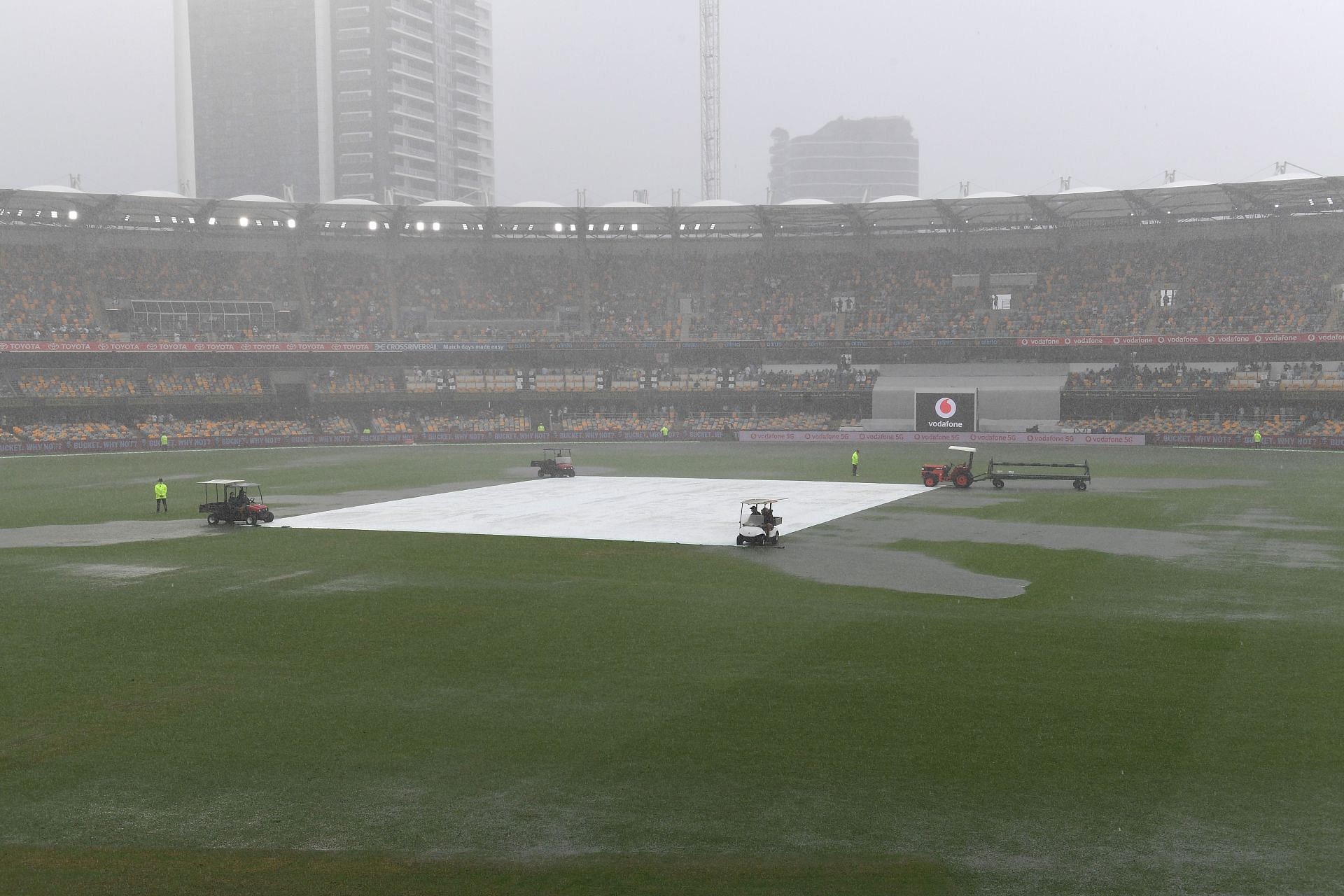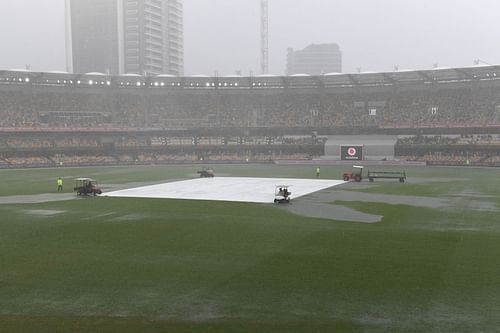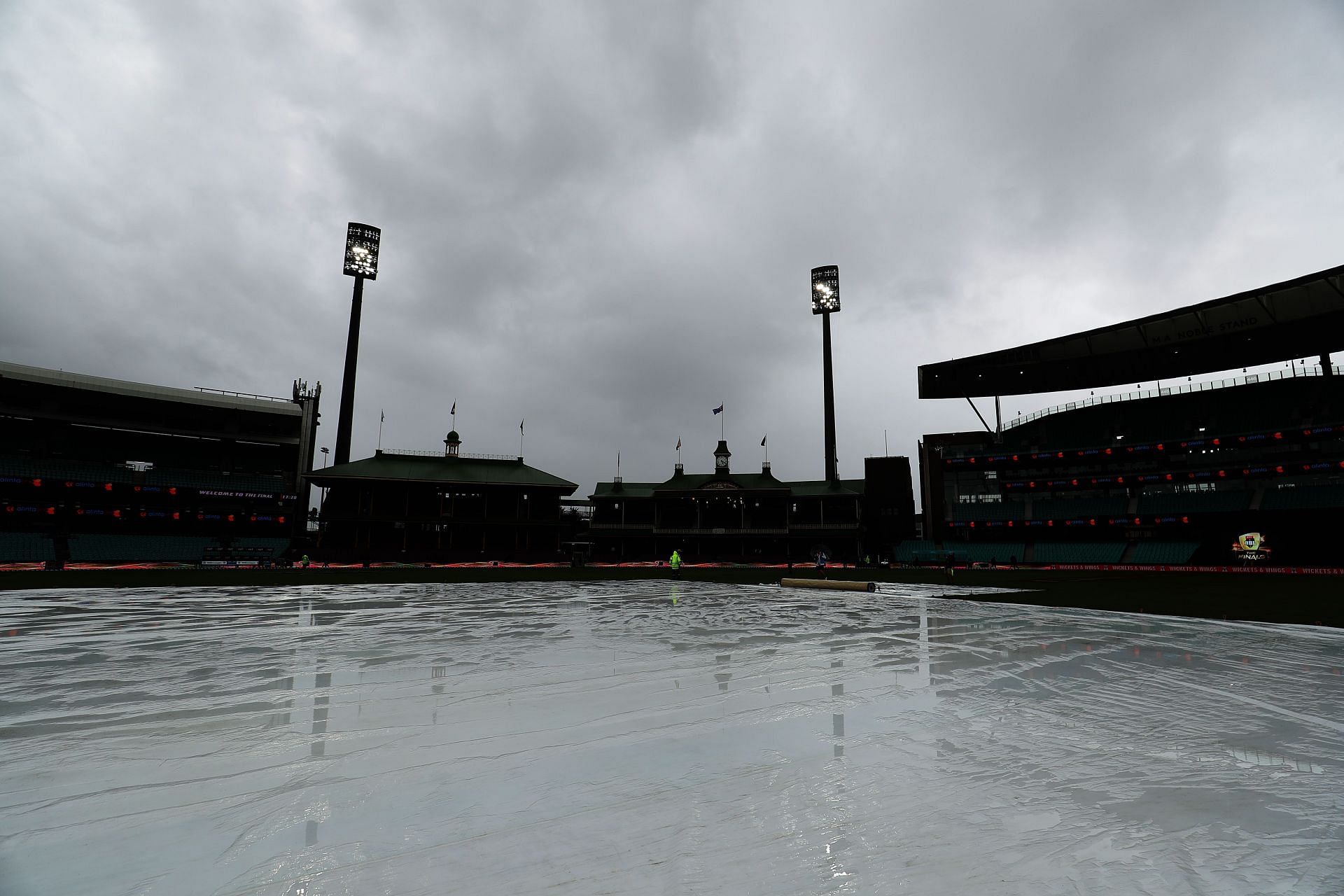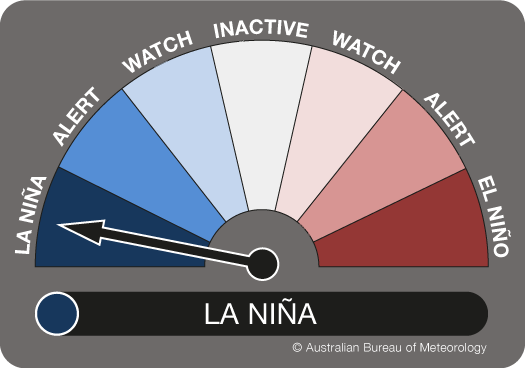
Rain dampens Ashes preparations as La Niña presence is felt early

A La Niña event made its presence felt early as England's three-day tour match in Brisbane was heavily affected by rain. Up to 121mm of rain fell in Brisbane on Tuesday and Wednesday, which saw play abandoned on Day 2 and no further play on Day 3.
England were sitting on 0/98, with Rory Burns (39 runs) and Haseeb Hameed (53) not out after just 29 overs were bowled for the match.
The internal warm-up match between England and the England Lions was the first of two warm-up matches for the touring squad. They have another four-day intra-squad game, which is scheduled to commence on Tuesday November 30.
The Australian squad is also preparing for a three-day intra-squad match between Australia (the "probables") and Australia A (the "possibles"). The match is due to commence on Wednesday December 1 in Brisbane.
However, La Niña is driving a dreary forecast for southeast Queensland over the next week. Some players from both camps may be devoid of a proper hit-out ahead of the first Test.
Showers are expected again in the early part of next week, with early forecasts suggesting that between 10-20mm of rain could fall this coming Monday and Tuesday in Brisbane.
Australia's squad preparations
Australia's advent of an intra-squad match at Southampton ahead of the 2019 Ashes was a critical part of the team's selection process and their subsequent success in the series. The final playing XI for the first Test is expected to be finalized following the internal hit-out.
Many Australian players will be banking on that final warm-up game to impress onlookers and earn selection for vacant posts in the side. This includes perhaps most notably Travis Head and Usman Khawaja, both of whom are vying for a spot in the middle order at No. 5.
Former Aussie captain Tim Paine announced on Friday that he will take a leave of absence from all forms of cricket for the "foreseeable future." His withdrawal has left the wicket-keeping spot wide open.
It would also present an opportunity for Jhye Richardson to push his case for the first Test. His spectacular form in the Sheffield Shield this season has yielded 23 wickets, including a standout 8-wicket haul against Queensland at the Gabba.
The rain has so far dampened preparations for Ashes players, who are currently stationed in southeast Queensland. Senior meteorologist (at the Bureau of Meteorology, Queensland) Laura Boekel said this in a statement on Thursday:
"widespread rain and severe thunderstorms (will occur) across Queensland today, with further rain on the way for the next week."
A La Niña event ensures that the trend will continue into the season.
What is La Niña?
La Niña is a complex weather pattern associated with tropical moisture and above-average rainfall for the eastern half of Australia. It pushes warmer waters towards the western part of the Pacific Ocean, leading to more evaporation and therefore increased rainfall.
The Bureau of Meteorology (BOM) officially declared that a La Niña event was present in the Pacific Ocean last Tuesday.
The BOM stated that the "La Niña event will persist until the late southern hemisphere summer or early autumn in 2022", in a climate driver update statement last Tuesday.
That would seemingly cover the entire Ashes series, which is scheduled to be played between December 8 2021, and January 18, 2022. But it is obviously far too early to predict scenarios of wash-outs and drawn matches.
Beyond early December, all that is clear is that La Niña will bring an increased likelihood of above-average rainfall in eastern Australia. Brisbane, Sydney, Melbourne and Hobart are particularly susceptible to rain.
The Sydney Cricket Ground already has an ominous record of rain-interrupted Test matches— it is the most rain-affected venue in the country. La Niña may not be helpful for that repuation either.

Since Test matches began in Australia in 1877, Sydney has had 24 days of play washed-out without a ball bowled. That is followed by Brisbane (8), Melbourne (6), Adelaide (2), Hobart (2) and Perth (0).
Both the La Niña threat and historical trends suggest there should again be little to no threat, at least, in Adelaide and Perth (if the fifth Test takes place in WA).
